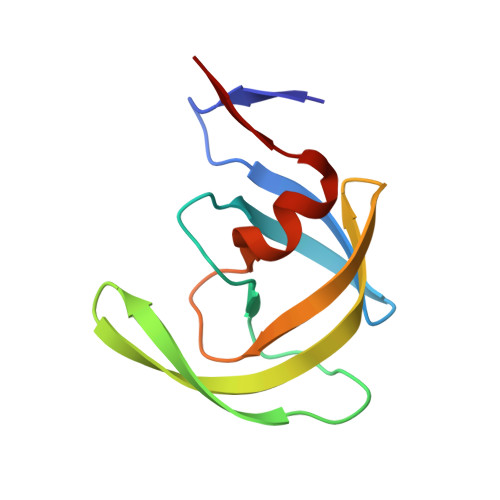Analysis of HIV-1 CRF_01 A/E protease inhibitor resistance: structural determinants for maintaining sensitivity and developing resistance to atazanavir.
Clemente, J.C., Coman, R.M., Thiaville, M.M., Janka, L.K., Jeung, J.A., Nukoolkarn, S., Govindasamy, L., Agbandje-McKenna, M., McKenna, R., Leelamanit, W., Goodenow, M.M., Dunn, B.M.(2006) Biochemistry 45: 5468-5477
- PubMed: 16634628
- DOI: https://doi.org/10.1021/bi051886s
- Primary Citation of Related Structures:
2AQU - PubMed Abstract:
A series of HIV-1 protease mutants has been designed in an effort to analyze the contribution to drug resistance provided by natural polymorphisms as well as therapy-selective (active and non-active site) mutations in the HIV-1 CRF_01 A/E (AE) protease when compared to that of the subtype B (B) protease. Kinetic analysis of these variants using chromogenic substrates showed differences in substrate specificity between pretherapy B and AE proteases. Inhibition analysis with ritonavir, indinavir, nelfinavir, amprenavir, saquinavir, lopinavir, and atazanavir revealed that the natural polymorphisms found in A/E can influence inhibitor resistance. It was also apparent that a high level of resistance in the A/E protease, as with B protease, is due to it aquiring a combination of active site and non-active site mutations. Structural analysis of atazanavir bound to a pretherapy B protease showed that the ability of atazanavir to maintain its binding affinity for variants containing some resistance mutations is due to its unique interactions with flap residues. This structure also explains why the I50L and I84V mutations are important in decreasing the binding affinity of atazanavir.
Organizational Affiliation:
Johnson & Johnson Pharmaceutical Research & Development, LLC, 665 Stockton Drive, Exton, Pennsylvania 19341, USA.















